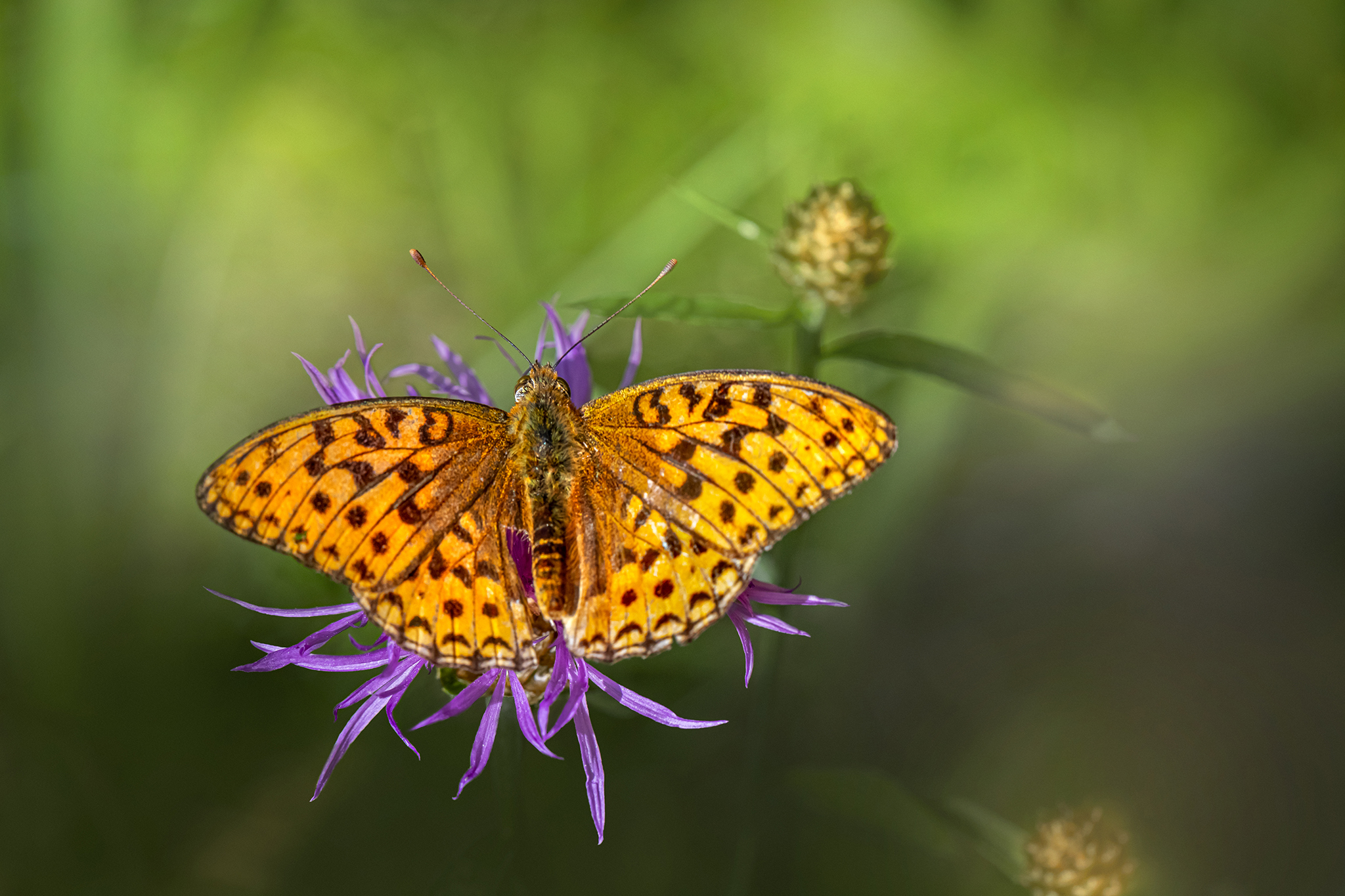The Lesser Marbled Fritillary (Brenthis ino) is a species of butterfly belonging to the family Nymphalidae, which is native to Europe and Asia. Here are some key characteristics and information about this butterfly:
Appearance: The Lesser Marbled Fritillary is a medium-sized butterfly with a wingspan ranging from 35 to 45 millimeters. Its upper wings have an orange-brown color with dark brown markings arranged in a marbled pattern, giving it its distinctive appearance. The undersides of the wings are lighter with intricate markings, providing camouflage when the butterfly is at rest.
Habitat: This species can be found in a variety of habitats, including open woodlands, meadows, scrublands, and grassy areas. It tends to prefer areas with abundant nectar sources and suitable larval food plants.
Lifecycle: The lifecycle of the Lesser Marbled Fritillary includes four stages: egg, larva (caterpillar), pupa (chrysalis), and adult butterfly. The female butterfly lays eggs on the leaves of host plants, which are typically violets (Viola spp.). The caterpillars hatch from the eggs and feed on the leaves of the host plants. After undergoing several molts, the caterpillar forms a chrysalis where it undergoes metamorphosis, eventually emerging as an adult butterfly.
Flight Period: The flight period of the Lesser Marbled Fritillary typically occurs from June to August, although this may vary depending on the geographical location and local climate conditions.
Range: The Lesser Marbled Fritillary has a wide distribution across Europe and Asia, including countries such as the United Kingdom, France, Germany, Russia, China, and Japan. Within its range, it may inhabit various types of habitats, from lowlands to mountainous regions.
Conservation: While the Lesser Marbled Fritillary is not considered globally threatened, localized declines may occur due to habitat loss, pesticide use, and other factors impacting its larval food plants and nectar sources. Conservation efforts aimed at preserving suitable habitats and promoting sustainable land management practices can help ensure the survival of this species.
Overall, the Lesser Marbled Fritillary is a beautiful butterfly species that contributes to the biodiversity of its native ecosystems and serves as an important pollinator for many plant species.
Views: 1293
Subscribe to the newsletter:
